1
What are gharials?
Are they crocodiles? Are they alligators? Are they dinosaurs? Well, gharials (Gavialis gangeticus) are none of these things.
Gharials are most closely related to crocodiles, as are their closest relatives, false or Malayan gharials (Tomistoma schlegelii).
However, gharials are the only species in the Gavialidae family and sit on their own long branch of the crocodilian tree of life which split from all other crocodilians perhaps more than 40 million years ago.
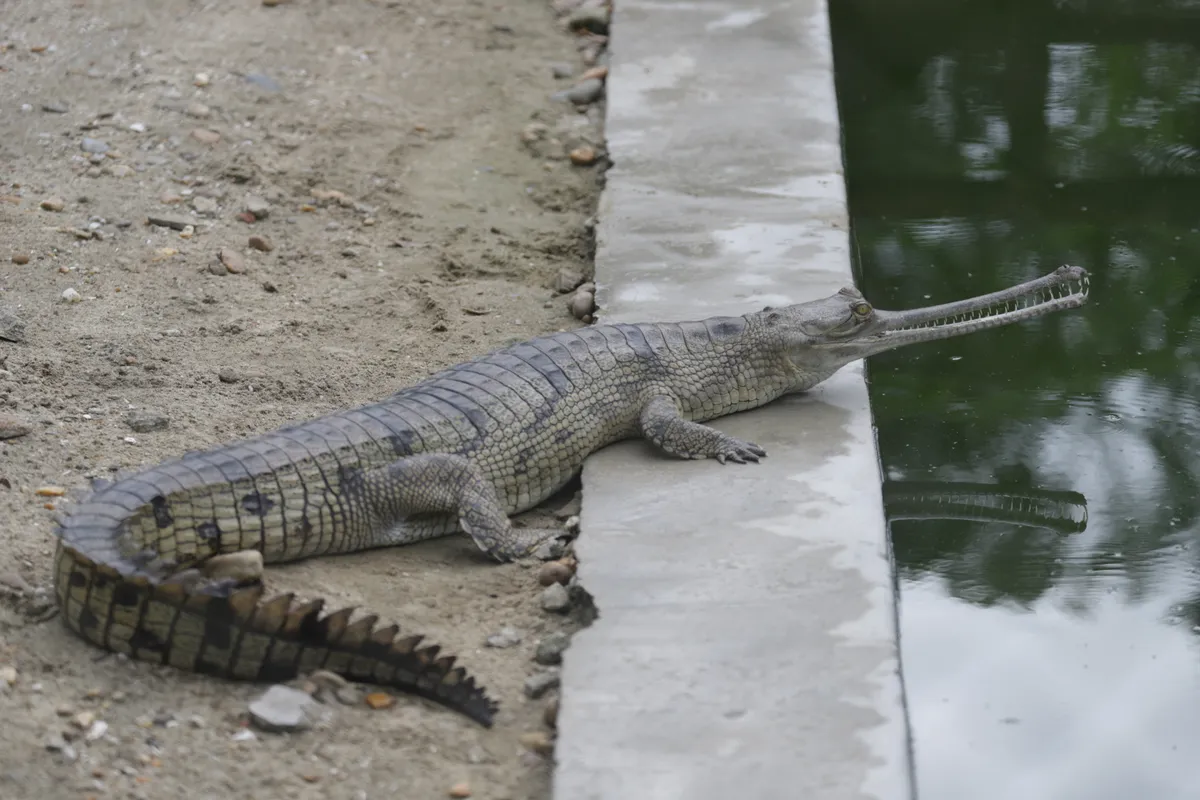
2
Why do gharials have an odd-looking snout?
Gharials are highly specialised predators and, although their snout might appear odd to us, it is perfectly adapted to capture the gharial’s favourite food, fish.
When male gharials reach sexual maturity, they develop a bulbous, fleshy growth on the tip of their snout. It is from this “ghara”, the Hindi word for a type of round pot, that gharials came to have their name.
3
How big are gharials?
Gharials are one of the biggest species of crocodilian. Male gharials can reach up to 6 metres in length! Though they typically reach around 4 metres long.
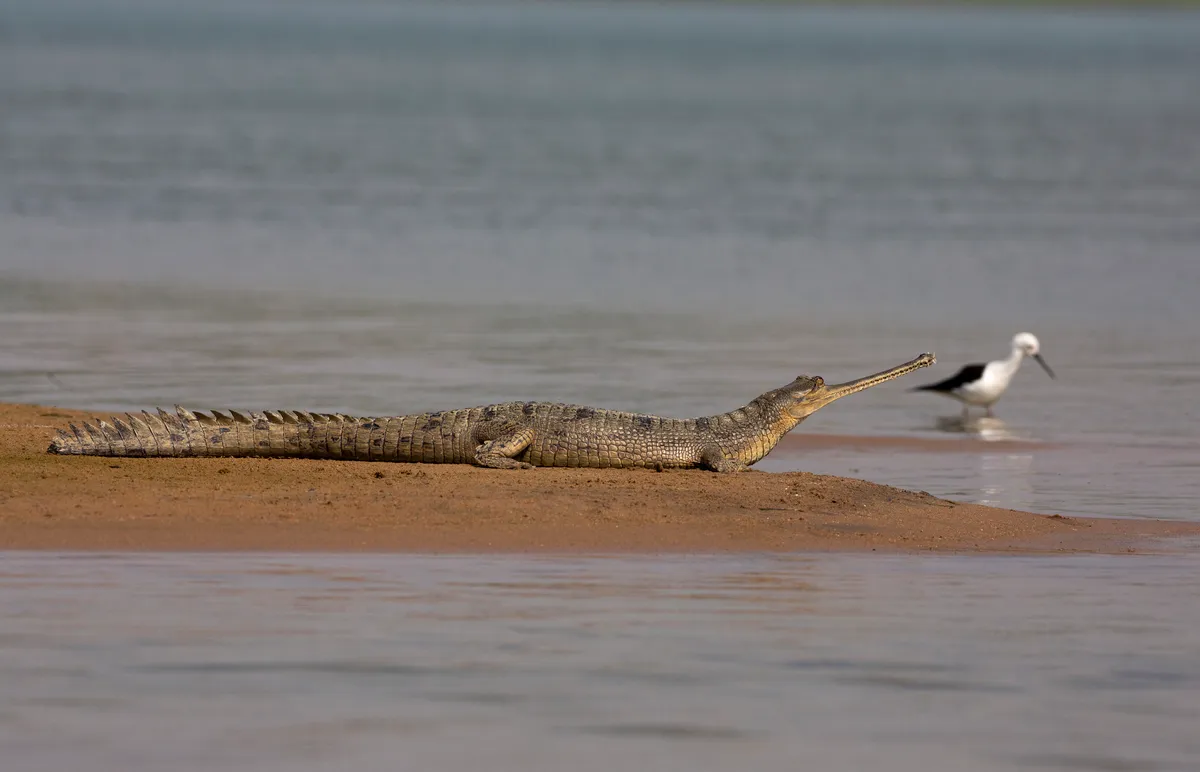
4
Are gharials good parents?
Gharials are perhaps the most dedicated parents of all reptiles. Females lay eggs in lots of nests close together and guard them from the river. When the eggs hatch, all of the hatchlings join together to form a large ‘creche’.
The females and the males then guard these creches from predators in the water and on the banks of the river. At the first sign of danger the hatchlings will rush to the safety of the nearest adult, often clambering onto their heads for protection.

5
Are gharials dangerous?
Gharials might be incredibly protective parents, but they are not typically a danger to humans. Gharials are very shy and will typically hide from humans.
However, there is a species of crocodile which shares the rivers with gharials, the mugger crocodile (Crocodylus palustris), which does occasionally attack humans.
6
Where do gharials live?
Gharials were once widespread across South Asia, from Pakistan to Myanmar. However, they now survive in several small, fragmented and ageing populations in northern India and Nepal.

7
Are gharials facing extinction?
Sadly, gharials are listed as Critically Endangered by the IUCN Red List. This is one step from the species becoming extinct in the wild. The Zoological Society of London's (ZSL) EDGE of Existence programme has identified the gharial as one of the world’s 100 most Evolutionarily Distinct and Globally Endangered (EDGE) reptiles.
This means gharials are one of the most unique and threatened species on the planet, and their extinction would mean there is nothing like them left on Earth.
8
Why are gharials Critically Endangered?
The damming and diversion of the rivers on which they depend threatens their habitats. The illegal extraction of sand from the riverbanks is destroying their nesting habitats.
The depletion of fish numbers due to overfishing by humans is a major threat, and gharials often died after being caught in fishing nets.
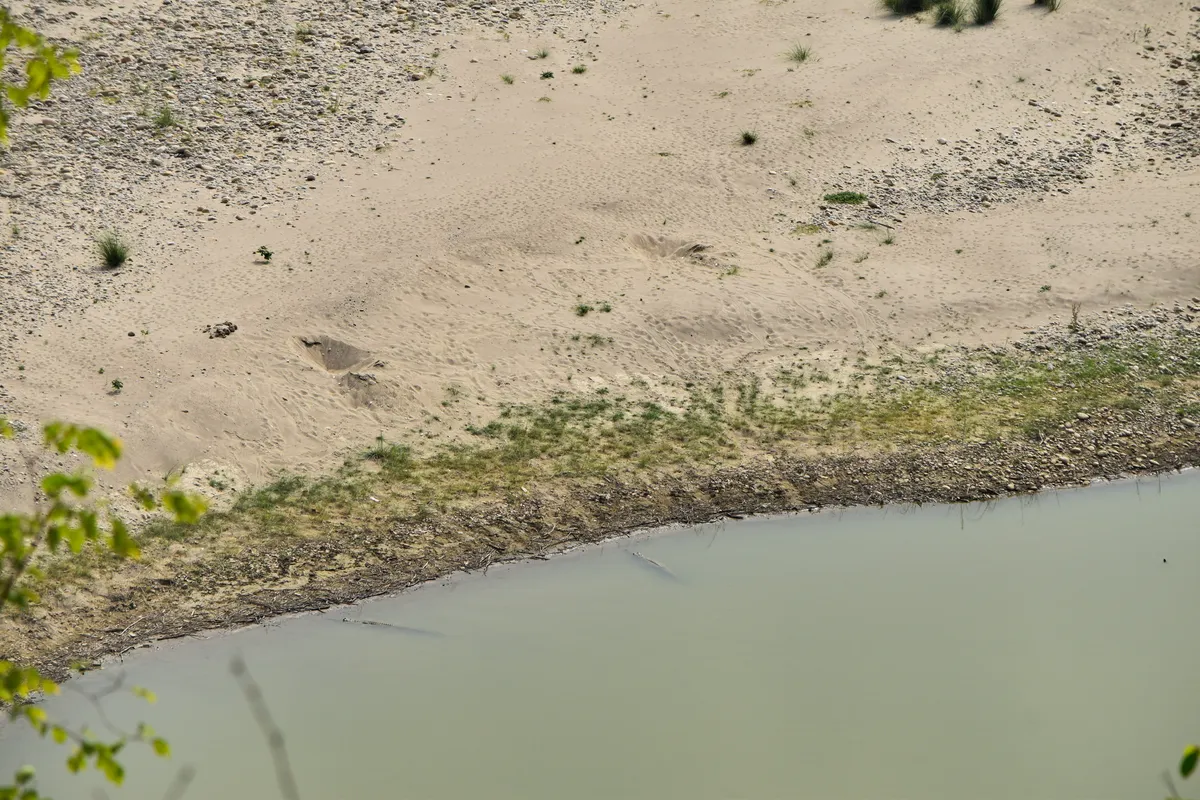
9
How many gharials are left in the wild?
The best current estimates suggest there are around 650 wild adult gharials left on Earth. This constitutes an approximate population decline of 98% in less than a century.
10
What is being done to save gharials?
ZSL’s EDGE of Existence programme and the local ZSL Nepal team are working across the country in an effort to conserve the two remaining national gharial populations.
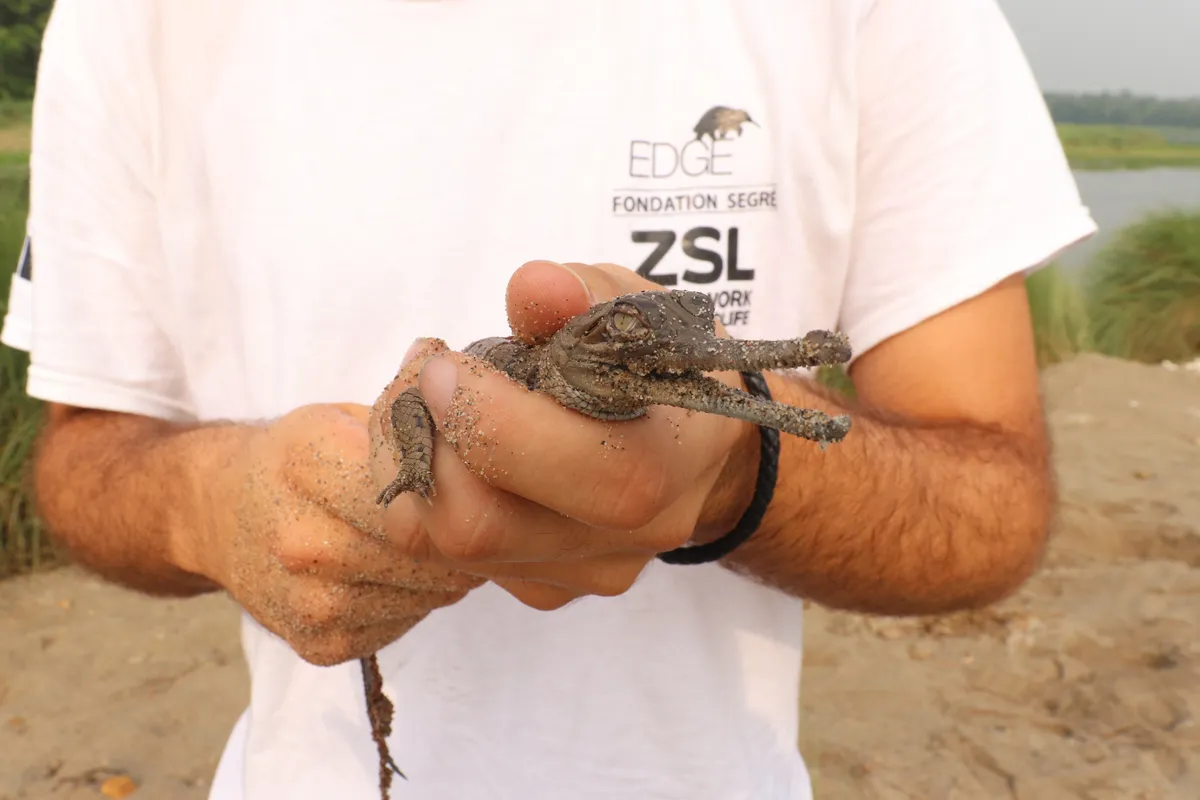
ZSL are working with local communities to provide alternative livelihoods to reduce competition for fish and persecution of gharials in the wild.
The Gharial Ecology Project in India has also been working to conserve the largest population of gharials in India for over a decade.

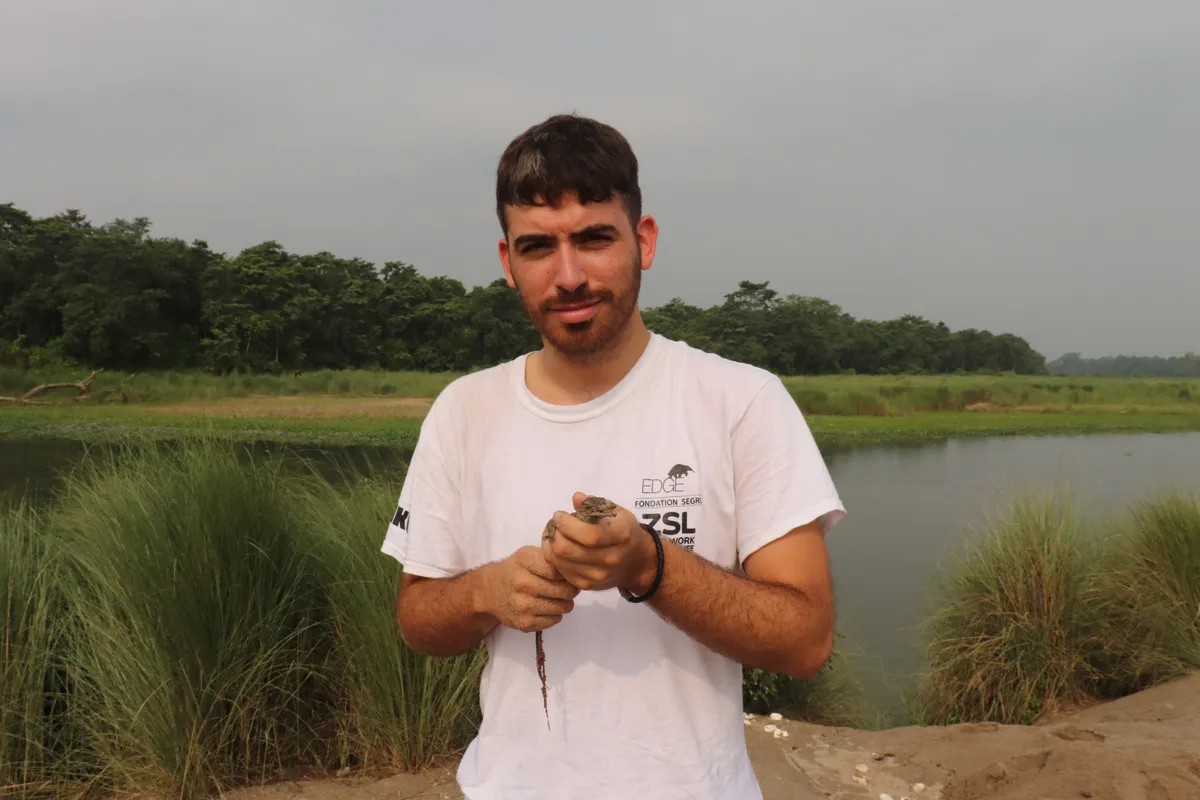
Rikki Gumbs is a PhD student with ZSL’s EDGE of Existence programme and Imperial College London. Rikki’s research focuses on identifying the most unique and threatened species on the planet for conservation action, particularly those species with little or no conservation attention.
Main image: Gharial crocodile (Gavialis gangeticus) hatchling. © Rikki Gumbs
